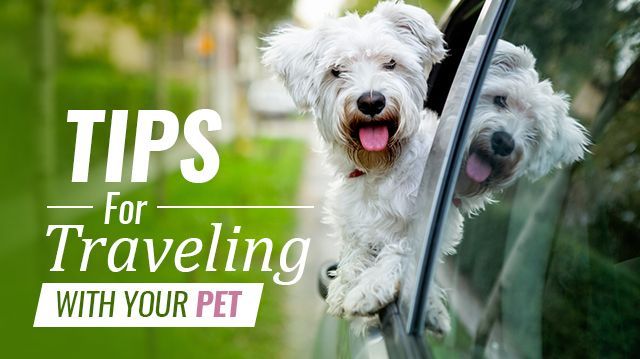
If it’s not a family vacation unless Fido or Fluffy come along, you now have another travel option. Earlier this year, Amtrak began allowing cats and small dogs — 20 pounds or under — to travel on some of its trains on weekends for an additional fee. These include the Downeaster and Northeast Regional routes. All pets must travel in soft carriers, which are placed under the seat. There’s a one pet per person limit, and only non-aggressive, healthy pets are permitted to travel on Amtrak.
There are lots of other ways to travel with your dog or cat, either in the US or abroad. However, you may need various types of paperwork and not all modes of transportation welcome or suit certain types of pets.
Getting started
Before taking your pet on a trip, make sure he’s up to date on all vaccinations, microchipped for identification and has an ID tag on his collar with your cell phone number. Some states require a current health certificate signed by your veterinarian for any pets entering their jurisdiction, and the same holds true for airlines and trains. Keep a current photo with you of your pet in case he gets lost.
If the pet is older or has a medical condition, check with your vet to ensure it is safe for your pet to travel. For any pet, let your vet know the length of travel time and your planned means of transportation.
Service animals
Many of the travel rules regarding pets do not apply to legitimate service animals used by people with disabilities. Although they must have health certification, these dogs can fly without charge and without regard to size with their person. Airlines may require written proof that a dog is indeed a service or emotional/psychiatric support animal. Never try to pass off a pet as a service or support animal just to save money or have the pet travel in an area it is not permitted.
Planes
Airlines have individual policies regarding pet transportation, but all arrangements require advance notice. Smaller pets may travel as carry-on luggage, while medium-to-large size dogs travel as cargo. Each airline has specific regulations concerning kennel size and type. Attach all of your contact information and the destination to the kennel. There are travel restrictions based on hot and cold temperatures for animals traveling as cargo. Always book direct flights when traveling with a pet in the cargo hold.
Many airlines do not accept brachycephalic — or short-nosed — dog and cat breeds or types. That’s because these animals are prone to respiratory issues, and air travel only exacerbates the problem. According to the American Veterinary Medical Association, half of the 122 dog deaths reported during airline flights from 2005 to 2010 were brachycephalic breeds. Common brachycephalic dog breeds include:
- Boxer
- English Bulldog
- French Bulldog
- Lhasa Apso
- Japanese Chin
- Mastiff
- Pug
- Pekingese
- Shar-Pei
- Shih Tzu
Brachycephalic cat breeds include the Persian and the Himalayan.
Trains
Train travel is less stressful for many pets than flying. Many regional carriers permit animals on board, but always check a railroad’s pet policy beforehand. Your pet must stay in a kennel during the trip. Train stops are very quick, so you aren’t going to have time to take your dog for a walk. For a worst-case scenario, make sure the bottom of the carrier is leak-proof.
Automobiles
Get your pet used to traveling in the car before you go off on a long trip. Dogs and cats should not travel uncontained in a vehicle. Cats should always travel in a carrier, while a dog may ride either in a carrier or in a dog restraint system in the backseat. For felines, use a carrier large enough to hold a litter box. For dogs, stop every few hours in a safe area for elimination and exercise purposes, but always keep the animal on a leash and make sure it is wearing identification.
Never leave your pets alone in a vehicle. In warm weather, the temperature inside a car can soar within just a few minutes, killing your pet. No matter the time of year, a pet left alone in a car is an invitation to potential thieves. Have water available for your pet, but feed them at your overnight accommodations.
Pet-friendly hotels
Many major hotel chains are pet-friendly, although you’ll pay an additional fee for your pal. Just make reservations in advance, so that you aren’t stuck trying to find a pet-friendly place to stay at the last minute in a strange city.
—Jane Meggitt
Jane Meggitt graduated from New York University and worked as a staff writer for a major New Jersey newspaper chain. Her work on pets, equines and health have appeared in dozens of publications, including The Daily Puppy, The Nest Pets, Horse News, Hoof Beats and Horseback magazines.
Sources:
http://www.humanesociety.org/animals/resources/tips/traveling_tips_pets_ships_planes_trains.html
https://www.aa.com/i18n/travelInformation/specialAssistance/pets.jsp
https://www.avma.org/public/PetCare/Pages/Traveling-with-Your-Pet-FAQs.aspx
http://www.usatoday.com/story/travel/2016/03/18/amtrak-pets-animals/81922766
https://www.avma.org/public/PetCare/Pages/Short-nosed-Dogs-and-Air-Travel-FAQs.aspx
http://www.usatoday.com/story/travel/flights/2014/08/03/fliers-scam-airlines-pets-service-dogs/13325733
http://www.bringfido.com

